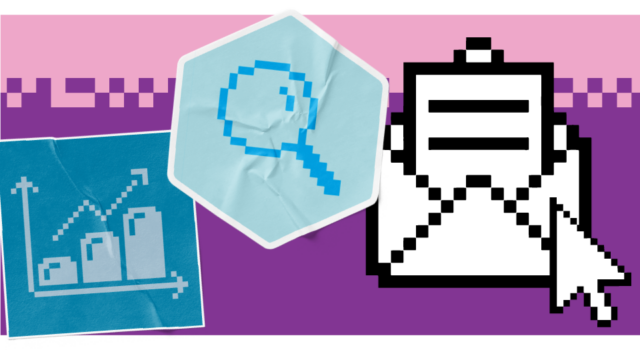In the energy and utilities industry, demands on customer service teams has never been higher. Every day, they field a stream of urgent queries, manage unexpected outages and juggle competing priorities in the bid to stay one step ahead of customer expectations.
The pressure comes from today’s consumers wanting more than ever: faster resolutions, personalised interactions and seamless support across every channel. Yet, teams often find themselves stretched thin, working with limited resources and outdated processes. This reactive approach strains operations and can drive burn-out across your customer representatives. The result is a cycle of firefighting, where everyone feels frustrated and brand is damaged.
By working smarter, it is possible to meet customer expectations without overwhelming customer service teams. The key is a fundamental shift from reactive to proactive service, backed by the right process, systems and support. This can empower teams to anticipate needs and deliver the kind of experience modern utility customers demand.
In this blog, find out how you can make the move towards smarter customer service – and the technology that will help.
Energy and utilities: an organisation at breaking point
The energy and utilities sector currently sits at a crossroads, facing both relentless complexity and unprecedented urgency. Legacy infrastructure, some of it decades old, is straining under the weight of soaring demand and rapid population growth. As extreme weather events become more frequent and climate volatility threatens reliability, maintaining stable and resilient services is more challenging and crucial than ever before.
On top of these operational pressures, the sector must also navigate a shifting regulatory landscape. New standards around sustainability, transparency and consumer protection require continuous adaptation and robust compliance.
At the same time, the profile of the utility customer has transformed. Today’s consumers expect immediate, transparent communication, such as real-time outage updates, easy access to account information and empathetic responses when things go wrong. This demand for seamless, personalised engagement is a far cry from the transactional interactions of the past.
Add to this that rising bills in recent years has seen many customers become more frustrated with their energy suppliers, as well as placing vulnerable customers in tougher situations. This can easily lead to increased customer satisfaction, higher call volume and issues with billing that have knock-on financial effects to your organisation.
Many organisations are struggling to keep pace with the changing tide. Disconnected legacy systems and manual processes prevent teams from accessing the information they need when they need it, leaving customer-facing staff stretched thin and firefighting issues as they arise.
Data as a solution
Despite these challenges, energy and utility companies have access to more data than ever before – from smart meters, digital touchpoints and service interactions. This data holds the key to anticipating customer needs, driving better planning, proactive communications and smarter decision making.
However, the true potential of data can only be unlocked if organisations are able to make sense of it. Without a clear strategy and appropriate data platforms, the sheer volume of information can become overwhelming, risking confusion rather than clarity.
The ongoing issues of ageing infrastructure, heightened expectations, stretched resources and big data has come to a head in recent years. Now, the industry is at a point of needed to address challenges head-on – or risk a constant state of crisis management.
The cost of reactive customer service
With customer service, it’s crucial to respond to arising issues – that’s often what makes it a high-pressure environment. But if this becomes a long-term, common trend, the consequences cascade throughout the business.
First and foremost, reactive service drives up operational costs. Inefficiencies multiply as teams scramble to resolve avoidable problems, often duplicating efforts or expending valuable resources on reactive tactics instead of futureproofing. A lack of co-ordination across siloed systems means greater spend on short-term fixes, without the visibility to address the real, underlying problems.
This inefficiency directly impacts the customer experience. Delays, repeated issues and opaque communication cause frustration, leading to increased customer churn and reputational damage that can take years to repair. Customers who feel unheard or unsupported are more likely to seek out competitors, diminishing market share and eroding trust.
Internally, the pressure to constantly react takes a toll on frontline employees. Chronic stress, burnout and high turnover become commonplace as staff are stretched thin by an endless stream of urgent requests. Losing experienced talent creates further operational headaches, as knowledge gaps appear and the cycle of crisis intensifies.
There is also the cost of lost opportunities. Reactive organisations rarely have the breathing room to innovate, meaning predictive maintenance, proactive communication and loyalty-building initiatives are left behind. Without the ability to anticipate customer needs, businesses forfeit their ability to delight and differentiate. This can lead to you falling behind your competitors and significantly slow growth.
What proactive customer service looks like in practice
A proactive approach to customer service can transform the challenges facing energy and utilities organisations, by turning them into opportunities. So, what should it look like in an ideal world?
Customer journeys should be smooth, thanks to unified profiles that merge billing, service history and real-time field updates. Every interaction is informed and personalised, so agents never need to ask a customer to repeat themselves and always have the full context.
AI-powered case routing ensures that issues – whether a looming outage or a potential billing error – are flagged before they escalate. Predictive alerts empower staff to reach out with solutions, often before the customer even realises there’s a problem. Instead of waiting for complaints, the business is already moving to resolve concerns, turning moments of potential dissatisfaction into proof of reliability.
Omnichannel communication is another crucial element. This means meeting customers on their terms, whether through SMS, email, chat or voice. Someone reporting a service hiccup by text receives an immediate, informed response; another favouring a phone call is greeted by an agent who already has all their details at hand. And even if the same customer reaches out on multiple channels, they should get a consistent response with no repetition required.
Real-time dashboards become mission control. Agents and field engineers see up-to-the-minute data, enabling decisive action and coordinated responses. Everyone, from the contact centre to the field, operates with insight and purpose.
The technology you need for proactive customer service
In the energy and utilities sector, digital transformation often feels like a double-edged sword: necessary, but daunting. Teams are already stretched thin, and the idea of introducing new systems can feel like adding complexity to an already overloaded environment. That’s why it’s important to choose user-friendly technologies that add genuine value to your customer service.
Let’s dive into the modern technologies available to address your challenges.
AI and automation
Integrating AI and automation into customer service operations is becoming essential for energy and utilities providers aiming to move from a reactive to a proactive model. With predictive analytics powered by AI tools, it’s possible to identify potential service disruptions, equipment failures or billing anomalies before they can affect customers, allowing you to respond swiftly before any negative repercussions land.
The deployment of AI-powered digital agents is also redefining frontline support by providing 24/7 handling of routine enquiries, scheduling and real-time updates.
Intelligent conversation platforms, such as Microsoft Copilot, enable organisations to build responsive digital agents that can triage customer needs, escalate urgent matters and continuously learn from every interaction. This results in reduced wait times and a more seamless experience for customers, while freeing up human staff to address higher value or more sensitive cases. Plus, it’s ideal for a sector frequently facing high volumes of cases and staff shortages.
For energy and utilities providers, this means meeting rising expectations for instant, on-demand support, even as operational complexity grows.
Customer data platforms
A unified and up-to-date view of every customer is fundamental for delivering proactive, personalised service. Customer data platforms aggregate information from disparate sources – such as billing systems, operations, field service and engagement channels – to provide a 360-degree customer perspective.
Solutions like Dynamics 365 Customer Insights empower organisations to break down data silos, enabling smarter segmentation and more relevant, timely outreach. Most crucially, they centralise data so everyone has access to customer context, preventing inconsistencies and mixed messages.
By underpinning every interaction with context-rich data, these platforms help build trust and loyalty while streamlining the resolution of customer issues.
Customer service automation platforms
Modern service management platforms orchestrate communications across multiple channels, ensuring a seamless and unified omnichannel experience for customers. These solutions facilitate case management and support workflow automation while promoting collaboration between departments.
With platforms such as Dynamics 365 Customer Service, agents are empowered with the tools and information they need at their fingertips, regardless of whether a customer reaches out via SMS, chat, email, social media or voice.
This integrated, omnichannel approach minimises operational friction, reduces errors and enables scalable, high-quality support even as customer expectations and service demands continue to grow.
Data visualisation
Empowering agents and field teams with real-time analytics is vital for decisive, coordinated action, especially in fast-moving situations like outages or crises.
By transforming complex data into intuitive dashboards using tools like Power BI, organisations can ensure that staff have immediate access to the insights required for rapid response and continuous improvement.
This live, visual access to operational data underpins reliability and reinforces customer trust.
Building a smarter technology stack
Adopting a modern, cohesive technology stack is essential for energy and utilities organisations seeking to deliver seamless customer experiences.
A well-structured tech stack (containing platforms like those listed above) ensures that every customer interaction is informed by up-to-date, comprehensive data, supports workflow automation to streamline operations and provides actionable insights through intuitive dashboards.
This integration reduces operational friction, minimises errors and enables organisations to respond rapidly to both customer needs and operational challenges, whether through consistent multichannel communication or swift crisis coordination.
Ultimately, investing in smarter technology infrastructure means equipping your organisation with the agility to meet evolving customer expectations, empowering teams with timely information and delivering reliable, high-quality service at scale.
Kickstart your customer service transformation
Energy and utilities’ organisations face mounting pressures to deliver reliable service amidst evolving customer expectations and ever-more complex operational landscapes. These mounting pressures mean it’s critical to act now, beyond you fall too far behind the curve.
The introduction of advanced technologies like AI and automation marks a turning point; but it’s crucial to find tools that work with your business, implemented effectively.
If you want to uncover the next steps in your road to proactive, AI-driven customer service, our latest webinar, Powering the Future of Energy and Utilities, is for you.
Our experts will address the real challenges you face, from agent burnout and disconnected systems to reactive communication and platforms that complicate more than they help. Discover smarter solutions to keep your teams aligned, empowered and responsive, levering Microsoft innovation and cutting-edge AI use cases.





